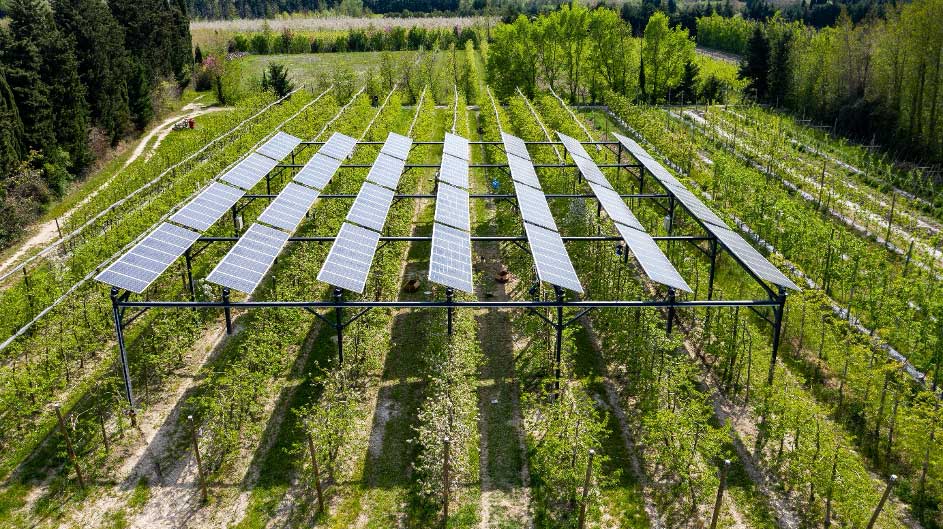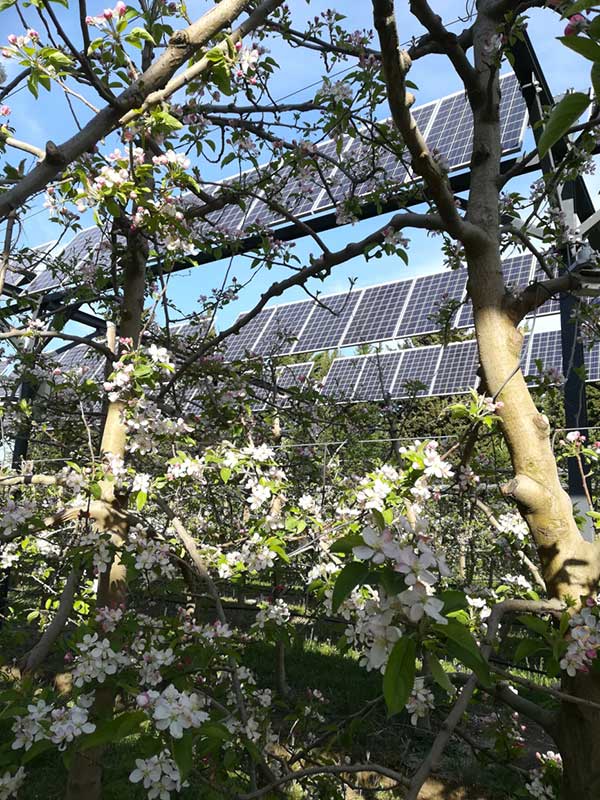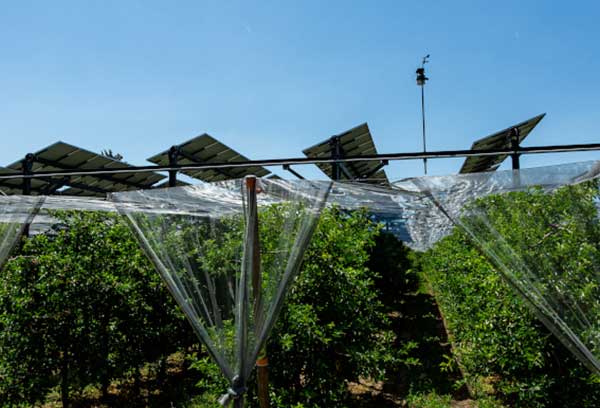Arboriculture: La Pugère

The La Pugère experimental station
The La Pugère experimental station was set up in 1988 in the town of Mallemort, on land made available by the General Council of the Bouches-du-Rhône department. It is located in the Durance valley, in the heart of France’s principal apple and pear production area.
The region
The French apple industry comprises 3,942 farms, with a total area of 37,296 hectares (30% of the agricultural area allocated to orchards in France in 2013). Apart from their economic importance, apples also act as a genetic reference, as they are the model plant of the Rosaceae family.
At the national level, apples represent 26% of the total area under production.
Moreover, 43% of the France’s production of table apples is destined for the domestic market, 38% for export and the rest for processing.
The effects of climate change on apple trees
- The unprecedented accumulation of unfavourable climatic conditions (frost, high temperatures, excessive rainfall) during the decisive phases of the annual tree cycle (from flowering to fruiting) has resulted in major production losses,
- Some species, such as apples, are not very resistant to water deficits and high temperatures. Outside their comfort zone, drops in yield and fruit size can be observed,
- Too much sunlight can lead to photo inhibition, i.e. the inactivation of photosystem II, resulting in a marked decrease in photosynthesis,
- The availability of water also plays a major role in vegetative growth. A study of Pink Lady apples under drought conditions showed an 80% decrease in leaf and twig biomass compared to control trees.

The objectives of installing agrivoltaic systems over apple trees
The idea is to modulate the shading of the trees according to their physiological needs, by means of mobile photovoltaic panels mounted on trackers and controlled using algorithms that prioritise agricultural over photovoltaic yields.

- To gain a thorough understanding of the ecophysiology of Golden apple trees in conditions of dynamic shading,
- To develop and test a growth model for apple trees that integrates the impact of shading associated with agrivoltaic systems,
- To test the panel control algorithms in order to extrapolate them to other crops using a generic approach,
- To test how the net systems used in agriculture (anti-hail, anti-insect, and others) can adapted in order to increase the benefits of dynamic agrivoltaics for the farmer and protect crops more effectively against increasingly frequent climate risks.
- To measure the biomass produced as well as the yield and quality of the fruit in comparison with the respective benchmark solutions.
The La Pugère experimental station in figures
The photovoltaic system covers an area of
0 m²
Size of the control plot:
0 m²
Number of panels:
0
Height of the agrivoltaic system:
0.5 m
Density:
0 plants/ha
Distance between the trees:
0.5 m
Distance between the rows:
0 m
Nominal power:
0 kWp
Agronomic results
- The trees sheltered by the dynamic agrivoltaic system experienced 63% less water stress than those on the control plot,
- Maintenance of cooler temperatures, with decreases ranging from 2°C to 4°C.
